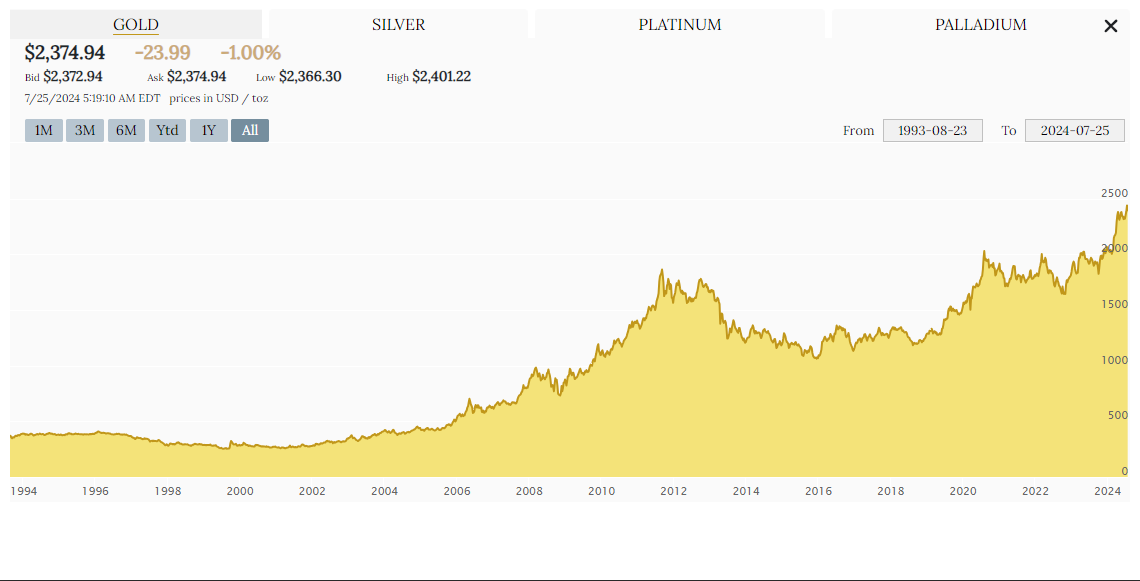
Shop BEST SELLERS For Current Inventory Selections / Get Free Shipping On All Orders Over $500

Shop BEST SELLERS For Current Inventory Selections / Get Free Shipping On All Orders Over $500
If you want to be a savvy precious metals investor, you’ll need to understand spot prices. The spot price is the current market price. We report spot prices daily on our website, and they fluctuate every day. Spot prices serve as a point of reference for setting our prices.
The spot price, as reported, is the value of a single troy ounce of gold, silver, or platinum. It’s about 10% heavier than a standard ounce.
Spot prices can be a source of frustration for new investors because the spot price reported on a website or in the media isn’t always the price you’ll pay for the metal, nor is it always the price you’ll receive when you sell it.

Spot prices are set by futures contracts on gold, silver, and other precious metals. A futures contract allows the buyer to sell a commodity at a predetermined time for a set price in the future. Futures contracts are purchased on a futures exchange.
It’s a financial product that allows investors to speculate on commodity prices. It’s also a way for buyers to lock in prices even though they’ll deliver a commodity to sellers later, though buyers and sellers can use a forward contract instead.
Because futures buyers are making some predictions, spot prices can fluctuate in response to world events, the state of the economy, and many other variables.
First, dealers want to make a profit and cover costs. Since they aren’t under any obligation to buy precious metals at a set price, they’ll charge as much as they think the market will bear. All dealers have competitors, so all dealers must factor in what their competition is doing.
Second, the spot price serves as something like a per-unit bulk price. A “bulk” order would represent 100 Troy ounces of gold or 1,000 Troy ounces of silver. You’d get a better price on a bulk order of precious metals just as surely as you’d get a better price on beans by buying beans in bulk.
This difference in price is known as the “premium over spot.”
The buyer offered less than the spot price for the same reason the dealer sells for higher than the spot price: they want to maximize their profits.
The difference between the costs of buying and selling gold is one reason why we tell our customers that gold isn’t a quick investment.
The surest way to make a profit is to buy it and then hold on to it for a decade or more. Sell it too fast, and you’ll almost always lose money.
We do our best to remain scrupulously fair and transparent when we set our prices. We usually set our rates for about 9% over the spot. For example, as of this writing, the spot price of gold is $2,342.98.
We’re selling 1 oz. Gold coins ($50 Gold American Eagles) for about 9% over the spot if you buy a single coin. The prices go down as you buy more. You can also save money by using a credit card or PayPal instead of a check or a wire. You will always have the ability to compare our asking price to the spot price and to ask yourself if the price is fair.
We also try to add value by offering secure and discreet shipping, free shipping on orders over $500, and a 30-day money-back guarantee.
Ready to get started? Contact US Precious Metals today.



US Precious Metals is one of America’s most trusted coin companies. We specialize in gold coins, gold bars, silver coins, silver bars, platinum coins, and palladium coins.